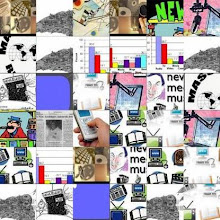Sports Illustrate, ESPN the Magazine, the Sporting News, and… Slam? If there is any uncertainty as to what Slam magazine is and what it is meant to accomplish as an entertainment magazine publication, all it takes is a glance at the cover and the central topic of the magazine should be apparent: basketball. With an urban and African-American target audience, Slam magazine has found a comfortable niche in the sports-entertainment print world as an “In Your Face Basketball Magazine,” according to the first issue of Slam magazine, printed in 1994. From the first issues’ NBA star Larry Johnson cover, to the latest July 7th, 2008 cover with USA basketball Olympians LeBron James, Carmelo Anthony, and Kobe Bryant, Slam magazine has had some of basketballs’ top stars grace its front page for a decade-and-a-half. Nine issues per year and a modest global circulation of over five hundred thousand readers worldwide, Slam magazine has been a consistently productive publication since 1994 and the PRIMEDIA publication shows no signs of slowing down.
The target audience is an interesting one, for the magazine is actually credited with acting as a catalyst in linking hip-hop culture to the basketball fan nation. This was achieved because the magazine not only included articles, interviews, and editorials about basketball, but also about hip-hop music and urban clothing lines. So the target audience for this magazine breaks down into basketball fans, more specifically urban basketball fans, and even more specifically African-American urban basketball fans.
The way that the magazine attracts its target audience is through covers that are meant to catch the eye of the urban basketball advocate. For example, in Slam’s total one hundred nineteen issues, there has been merely eleven times that a Caucasian basketball player has appeared on the cover of the ninety-or-so page magazine. Now this is by no means a degrading racial action; since the magazine began, there have been tremendous players of numerous races and ethnicities. However, although white NBA players such Jason Kidd, John Stockton, Former NBA MVP Steve Nash, and numerous others were quite popular and unbelievable talented, their popularity pales in comparison with the likes of Carmelo Anthony, Shaquille O’Neal, Kobe Bryant, LeBron James, Charles Barkley, Dennis Rodman, Scottie Pippen, Karl Malone, countless others, and the greatest of them all, Michael Jordan (all of whom happen to be African-American). Other than the fact that Slam was attempting to target the African-American audience, the other motivation for so many black basketball stars on the cover page was because the most popular players in the NBA during the last decade of the twentieth century and the first decade of the twenty-first century were primarily of African-American descent.
Okay, now that the reader has seen the cover and is intrigued, how does this magazine differ from Sports Illustrated and the other mainstream sports magazines? They both attempt to put the most popular sports stars on their covers concerning Sports Illustrated and Slam’s niches of general interest sport and basketball sport and culture, respectively. However, one of the key components that makes Slam magazine so much different than the mainstream counterparts is the street language and the in-your-face editorial and columnist writing. Here are some examples of the inventive street language straight off of the July 7th, 2008 issue: Ballin’ (cover), Slamadacentury (page 11), “…a similarly disjoined team was sent to rep the USA in Athens…” (page 16), etc. And even though the magazine is geared toward the African-American audience, the magazine (in an extreme fairness and racially unbiased manner) will print stories about any ethnicity regardless the audience and base the selection of stories solely on expected popularity value, as seen in the latest issue (white NBA stars Pau Gasol and Manu Ginobili were both featured in articles in this issue).
The ratio of African-American to white athletes on the cover of the magazine, the selection of stories, and urban street language show a slight slant toward a certain racial ethnic group (also known as the target audience, African-American basketball and hip-hop culture advocates), right? Yes, in the sense that all of those things tend to target the African-American audience, and no, because any race can be a part of the hip-hop culture and Slam merely selects the most popular players to be on their covers. The more suggestive notion of a slant is shown in the advertising within the magazine. It is riddled with fitness apparel, tennis shoe, and hip-hop music advertisements. All races can be lured by those advertisements; this much is true. However, in contrast with all of the other mainstream magazines, most of Slam’s advertisements feature African-American commercial actors.
Monday, July 14, 2008
Subscribe to:
Post Comments (Atom)

No comments:
Post a Comment